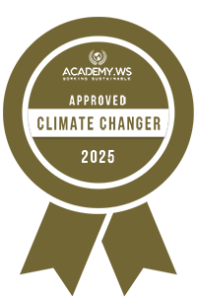The most beautiful places in Austria & Germany: Where nature still rages and people can breathe a sigh of relief
At a time when many resorts are losing their authenticity due to overuse by tourists, the Gesäuse in the Styrian mountains offers a refreshing exception: untamed nature, decelerated life, real breathing space. As Austria's youngest national park, the Gesäuse combines wild beauty with conscious protection. Anyone on vacation here immerses themselves in a landscape that lets you feel its power - and wants to be treated with respect.
Rugged limestone giants, rushing mountain streams, fragrant forests and tranquil alpine pastures characterize the region - but it is not only the natural treasures that impress. The Gesäuse is regarded as a model region for sustainable tourism, where environmental protection, regional development and vacations interact as equals. A trip here shows what the future can look like - if we shape it carefully.
Arrival & mobility - leave your car at home
Even the journey to the Gesäuse proves it: Sustainability starts on the doorstep. The region is very well connected to public transport and offers a variety of environmentally friendly mobility solutions:
The Ennstalbahn railroad runs directly into the National Park - stops in Admont, Johnsbach, Weng or Gstatterboden provide easy access to hiking trails and accommodation.
Regional bus lines also provide access to more remote villages.
E-bikes, hiking buses and shuttle services are available locally.
Many hostels and tourism businesses reward travel by train or bike - for example with discounted nights or guided tours. If you wish, you can make your entire stay completely car-free - without sacrificing comfort.
Overnight stay with responsibility
In the Gesäuse, you can sleep with a view of the mountains - and with a clear conscience. The region's accommodation providers are increasingly focusing on ecological standards, regional value creation and respectful use of resources.
Recommended addresses:
Öko-Gasthof zur Bachbrücke - organic cuisine, energy efficiency, natural garden
Camping Forstgarten - nature-oriented accommodation with a minimal ecological footprint
Naturfreundehaus Gstatterboden - simple rooms with a great panorama
Many of these businesses are part of initiatives such as the Styrian Eisenwurzen Nature and Geopark or bear environmental labels such as the Austrian Environmental Seal of Quality. Staying overnight here is a conscious decision - for the region, for the environment and for a new travel culture.
Activities - experience the wilderness up close
Those who come to the Gesäuse are not looking for entertainment, but for grounding. Nature is not staged here, but experienced - directly, honestly and often impressively intense:
The Gesäuse Hüttenrunde offers a multi-day trekking tour through alpine terrain, from hut to hut, with breathtaking views and plenty of solitude.
Guided nature hikes with rangers or nature educators impart knowledge about biodiversity, geology and climate development.
Riverwalking along the Enns allows you to get to know the mountain river in a completely new way - as the lifeline of a region, not as an adventure park.
A special experience is the "Path of Wilderness", a didactically designed nature trail that explains the ecological connections of the national park and sharpens your own perception.
Regional cuisine with attitude
In the Gesäuse, people don't just cook - they enjoy food with awareness. The culinary culture is closely linked to the landscape: what grows here is processed. What lives here is used respectfully. The connection to the region is not a marketing concept, but part of everyday life:
Wild herbs from the Alpine valleys,
Ennstal alpine lamb from extensive grazing,
Cheese, milk and yogurt from mountain farms,
Mountain fish from sustainable pond farming.
Many restaurants and producers follow the principles of the Slow Food movement, cultivate traditional recipes and pay attention to fair cooperation with regional suppliers.
Sustainability factor - the Gesäuse as a model region
The Gesäuse is exemplary for a new form of tourism that combines experiencing nature and nature conservation. Here it was recognized early on that an intact environment and economic life need not be a contradiction in terms - on the contrary:
The Gesäuse National Park is recognized as an IUCN category II protected area - this means that ecological priority is given in all decisions.
There is intensive cooperation with schools, universities and the local population - for example as part of Citizen Science.
The region actively promotes sustainable agriculture, cultural initiatives and soft forms of mobility.
Instead of event tourism and mass offerings, the focus here is on depth rather than breadth - creating a vacation experience with real added value.
Conclusion - Why this place is more than just a vacation destination
The Gesäuse is not just a destination - it is a statement. For a new way of traveling. For more mindfulness towards the landscape and way of life. For a connection between people and nature based on respect and knowledge.
Here you can feel how little it takes to feel rich: a simple hut, a wide view, the sound of the Enns. And the certainty of being part of a movement that not only travels, but travels responsibly.
Further information:
https://www.steiermark.com/de/Gesaeuse
https://nationalpark-gesaeuse.at/
Next episode:
The Rhön - watching stars instead of Netflix
A region between Bavaria, Hesse and Thuringia that sets new standards for sustainable tourism as a UNESCO biosphere reserve.












